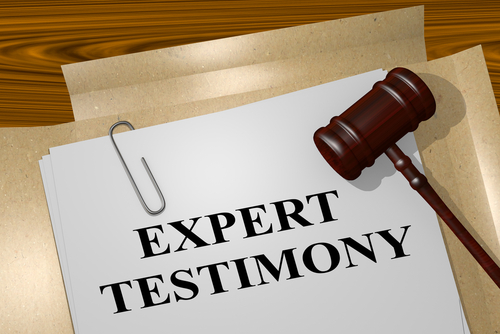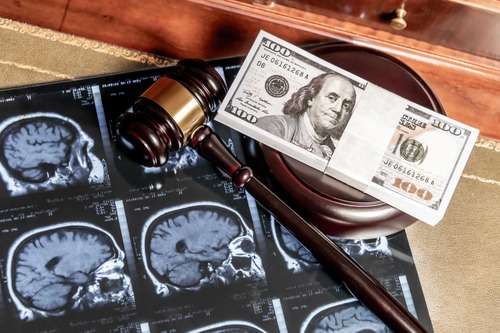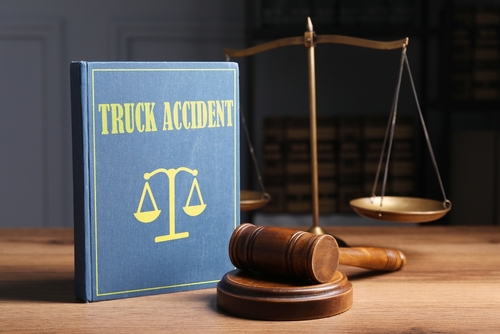Navigating the complexities of a personal injury case requires a strategic approach to evidence collection and presentation, often best handled by an experienced Cumming personal injury lawyer. Our team of experienced personal injury lawyers are dedicated to guiding you through this intricate process. With a deep understanding of the legal landscape and a commitment to securing fair compensation for our clients, we provide expert advice on gathering the necessary evidence to build a compelling case. From medical records to eyewitness testimony, we ensure that every piece of evidence is meticulously documented and preserved, maximizing your chances of a favorable outcome.
Types of Personal Injury Claims
Understanding the different types of personal injury claims is crucial for anyone seeking compensation for their injuries. Each type of claim has unique characteristics and requirements. Here are some common categories:
Premises Liability
Premises liability claims arise when a person is injured on someone else’s property due to unsafe conditions. Examples include slip and fall accidents, inadequate security, or poorly maintained facilities. Property owners have a legal duty to ensure their premises are safe for visitors.
Medical Malpractice
Medical malpractice occurs when a healthcare professional fails to provide the standard of care, resulting in harm to a patient. Common examples include misdiagnosis, surgical errors, and medication mistakes. Victims must prove that the healthcare provider’s negligence directly caused their injuries.
Auto Accidents
Auto accident claims, particularly those involving a car accident, are among the most common personal injury cases. Reporting the car accident to law enforcement and obtaining a police report is crucial for building a strong case. These claims involve injuries sustained in car, truck, or motorcycle accidents. Victims often seek compensation for medical bills, lost wages, and pain and suffering. Establishing fault is critical in these cases.
Product Liability
Product liability claims arise when a defective product causes injury. This can include faulty designs, manufacturing defects, or inadequate warnings. Manufacturers, distributors, and retailers can be held liable for injuries caused by their products.
Wrongful Death
Wrongful death claims are filed when a person dies due to another party’s negligence or intentional actions. Family members of the deceased may seek compensation for lost income, funeral expenses, and emotional distress. Establishing liability is essential in these sensitive cases.
Understanding these types of personal injury claims helps victims identify their rights and the potential for compensation. Each claim requires specific evidence and legal strategies, making it essential to consult with an experienced personal injury attorney for guidance.
Medical Records and Expert Testimony
Importance of Medical Documentation in Establishing Injuries and Treatment
It is essential to seek medical attention promptly after an injury to ensure proper treatment and documentation.
Medical records serve as a crucial foundation in any personal injury case. These documents provide a detailed account of your injuries, treatment plans, and recovery progress. They include information such as:
● Diagnosis of injuries
● Treatment received
● Prescriptions and medications
● Follow-up appointments
Having comprehensive medical documentation helps establish the extent of your injuries. It also shows how these injuries impact your daily life. Insurance companies and courts rely heavily on this evidence to assess the validity of your claim.
Role of Expert Medical Testimony in Proving Severity and Long-Term Impact
Expert medical testimony can significantly enhance your case. Medical professionals, such as doctors and specialists, can explain the nature of your injuries and their long-term effects. Their insights can address:
● The severity of your injuries
● The expected recovery timeline
● Potential future medical needs
Expert witnesses provide credibility to your claims. Their professional opinions help convey the seriousness of your injuries to a judge or jury. This testimony can also clarify how your injuries may affect your quality of life moving forward.
In summary, thorough medical records combined with expert testimony create a strong basis for your personal injury case. They help demonstrate not just the physical impact of your injuries, but also the emotional and financial toll they take on your life.
Accident Reports and Documentation
Significance of Police Reports and Incident Documentation
Police reports play a crucial role in personal injury cases. These documents provide an official account of the accident, detailing the circumstances, parties involved, and any citations issued. Law enforcement officers gather information at the scene, which can be vital for establishing liability. The report often includes witness statements and diagrams of the accident scene, adding credibility to your claim.
In addition to police reports, incident documentation is essential. This includes any reports filed by other authorities, such as fire departments or emergency medical services. These documents help create a comprehensive picture of the event, reinforcing your case.
Importance of Preserving Official Documentation
Preserving official documentation is vital for a successful personal injury claim. Ensure you obtain a copy of the police report as soon as possible. Review it for accuracy and request corrections if necessary. Keep all related documents organized, including medical records, photographs, and correspondence with insurance companies.
Additionally, you should store these documents securely. Digital copies can be helpful, but also keep physical copies in a safe place. Having well-preserved and accessible documentation strengthens your case and aids your personal injury attorney in presenting a compelling argument for compensation. Properly managed evidence can significantly influence the outcome of your case, making it essential to prioritize documentation throughout the process.
Eyewitness Testimony
Eyewitness testimony can play a crucial role in a personal injury case. Third-party accounts provide additional perspectives on the events leading up to the injury. These testimonies can help establish what happened, who was at fault, and the circumstances surrounding the incident. Eyewitness testimony is a crucial component of personal injury evidence, providing additional perspectives on the events leading up to the injury.
Value of Third-Party Accounts in Corroborating Events
Eyewitnesses can provide objective views that support your claims. Their observations can confirm details that may be contested, such as the actions of the parties involved, the environment at the time of the incident, and the sequence of events. This corroboration is vital in strengthening your case, as it adds credibility to your narrative.
Tips for Collecting and Preserving Witness Statements
Collecting witness statements promptly is essential. Here are some tips to ensure you gather valuable testimony:
- Identify Witnesses Quickly: As soon as the incident occurs, identify anyone who may have seen what happened. This could include bystanders, passersby, or even people in nearby vehicles.
- Ask for Contact Information: Obtain names, phone numbers, and email addresses from witnesses. This information will be helpful for your attorney when following up for formal statements.
- Record Statements: If possible, record the witness’s account on video or audio. This method captures their words accurately and preserves their tone and emotion.
- Take Notes: Write down key points from their statements immediately after the incident. This documentation will help you remember details later.
- Follow Up: Check in with witnesses after a few days. They may recall additional information or become more comfortable providing a formal statement.
Preserving eyewitness testimony can significantly impact your personal injury case. By gathering and documenting these accounts effectively, you enhance your chances of proving your claim and receiving fair compensation.
Physical Evidence
Physical evidence plays a crucial role in personal injury cases. This type of evidence includes tangible items directly related to the accident. Collecting and presenting physical evidence can significantly strengthen a claim and help establish liability. Physical evidence can help establish fault and prove the extent of physical injuries sustained in the accident.
Importance of Tangible Items Related to the Accident
Tangible items provide concrete proof of the circumstances surrounding the incident. These items can help demonstrate how the accident occurred and the extent of the injuries sustained. Physical evidence can include:
- Photographs: Pictures of the accident scene, injuries, and property damage can illustrate the severity of the incident. They provide visual context that can be persuasive in court.
- Videos: Video footage from traffic cameras, security cameras, or bystanders can capture the moments leading up to and following the accident. This evidence can clarify events and show fault.
- Damaged Property: Retaining damaged vehicles or other property related to the accident can serve as a powerful representation of the impact of the incident.
- Hazardous Conditions: Documenting unsafe conditions, such as wet floors or poor lighting, can support claims of negligence. This evidence can show that the responsible party failed to maintain a safe environment.
Examples
- Photographs: Take clear, detailed photos of the accident scene. Include all relevant angles, showing vehicles, road conditions, and any visible injuries.
- Videos: If available, collect video evidence from nearby cameras. This footage can provide a timeline of events and support witness statements.
- Damaged Property: Keep records of any damaged items, including repair estimates or appraisals to highlight the financial impact of the incident.
- Hazardous Conditions: Document any unsafe conditions with photos and notes. This evidence can show negligence on the part of property owners or other responsible parties.
In summary, physical evidence is essential in personal injury cases. It helps establish the facts of the case, supports witness testimonies, and can significantly influence the outcome of the claim. Collecting and preserving this evidence is vital for a successful resolution.
Financial Documentation
Financial documentation plays a crucial role in establishing economic damages in a personal injury case. This evidence helps demonstrate the financial impact of the injury on the victim’s life. Financial documentation helps demonstrate the economic impact of a physical injury on the victim’s life. Here are the key components of financial documentation:
Evidence of Economic Damages
- Medical Bills: These documents provide proof of the costs associated with medical treatment. They should include hospital bills, doctor’s fees, rehabilitation costs, and any ongoing medical expenses. Keeping detailed records of all medical expenses is vital for supporting your claim for compensation.
- Lost Wages: If the injury prevents you from working, you may seek compensation for lost income. Documenting lost wages is essential. This can include pay stubs, tax returns, and employer statements that confirm your absence from work due to the injury.
Employment Records and Pay Stubs
- Employment Records: These documents verify your employment status and income level before the injury. They can include job descriptions, employment contracts, and any performance evaluations. This information helps establish how the injury affects your earning potential.
- Pay Stubs: Collecting recent pay stubs is important for showing your income prior to the accident. Pay stubs can also help calculate future lost wages if you are unable to return to your previous job or if your earning capacity is diminished due to the injury.
By gathering comprehensive financial documentation, you strengthen your personal injury case. This evidence not only supports your claim for compensation but also illustrates the significant impact the injury has had on your financial stability.
Expert Witnesses
Expert witnesses play a crucial role in personal injury cases. They provide specialized knowledge that can clarify complex issues for the court. Their testimony can significantly impact the outcome of a case by establishing facts that are beyond the understanding of an average juror. Expert witnesses can provide crucial insights that support the evidence needed for a successful personal injury lawsuit.
Role of Various Experts in Strengthening the Case
Different types of experts can enhance your case. For instance, accident reconstruction experts can analyze the details of the incident. They can recreate the accident scene and provide insights into how it occurred. This type of testimony can help establish fault and clarify the events leading up to the injury.
Medical specialists also play a vital role. They can explain the nature of the injuries sustained and the necessary treatment. Their insights into the long-term impact of injuries can be critical in demonstrating the severity of a case. This information helps establish the extent of damages and the need for ongoing medical care.
Types of Expert Testimony: Accident Reconstruction, Medical Specialists
- Collision Reconstruction Experts
These experts use physics, engineering, and other disciplines to analyze accidents. They can testify about vehicle speeds, angles of impact, and the actions of drivers involved. Their analysis helps clarify how the accident happened and who is at fault. - Medical Specialists
Medical professionals, such as doctors or physical therapists, provide testimony regarding injuries. They can outline the treatment process and explain how injuries affect the victim’s life. Their testimony can help establish the necessity for future medical care, rehabilitation, and associated costs.
Having expert witnesses can significantly strengthen your personal injury claim. Their specialized knowledge and professional opinions provide the court with a clearer understanding of the case, increasing the chances of a favorable outcome.
Surveillance and Video Footage
Video evidence can play a crucial role in a personal injury case. This type of evidence provides a visual account of the incident, which can help establish what happened and who was at fault.
Value of Video Evidence from Security Cameras or Dashcams
Surveillance footage from security cameras can capture the moments leading up to the accident. This footage can show critical details, such as the actions of the parties involved and the conditions of the scene. Dashcam videos from vehicles can also provide valuable insights, especially in auto accidents. These recordings can confirm the sequence of events and help clarify who was responsible for the incident.
How to Obtain Video Evidence
To obtain video evidence, you should act quickly. Many security systems overwrite old footage after a certain period. Contact the property owner or business where the incident occurred to request the footage. If the accident took place on a public road, you may also want to check with local law enforcement for any available traffic camera footage.
Importance of Proper Documentation
Once you obtain video evidence, document it properly. Make sure to keep a copy of the footage and note the date and time it was recorded. This documentation is essential for your personal injury attorney when building your case.
In summary, video evidence can significantly enhance your personal injury claim. It provides clear, objective proof of the events that transpired, helping to establish liability and support your case for compensation.
Preserving Evidence
Preserving evidence is crucial in a personal injury case. Timely collection and proper preservation of evidence can significantly impact the outcome of your claim. When you gather evidence, ensure that it is done as soon as possible. Delays can lead to loss or degradation of important information.
Importance of Timely Collection and Proper Preservation
After an accident, the scene can change quickly. Witnesses may leave, and physical evidence may be altered or removed. Collecting evidence promptly helps maintain its integrity. For example, photographs of the accident scene, vehicle damage, and any visible injuries should be taken right away. This documentation provides a clear, accurate representation of the incident.
Proper preservation of evidence is just as important. Store physical items, like damaged property, in a safe place. Keep digital evidence, such as photos or videos, backed up and organized. If you have medical records, ensure they are stored securely and accessible. This careful handling of evidence can strengthen your case and support your claims.
Tips for Gathering and Maintaining Evidence Integrity
- Document Everything: Take detailed notes about the accident, including dates, times, locations, and involved parties. This information can be crucial later.
- Gather Witness Information: Collect names and contact details of witnesses. Their statements can provide valuable support for your case.
- Use Technology: Utilize smartphones to capture photos and videos of the scene, injuries, and any relevant conditions. Make sure to date and timestamp these files.
- Keep Records Organized: Maintain a file for all evidence, including medical records, bills, and correspondence with insurance companies. This organization helps in presenting your case clearly.
- Consult Professionals: If needed, seek help from personal injury attorneys. They can guide you on what evidence to collect and how to preserve it effectively.
By focusing on timely collection and proper preservation of evidence, you enhance your chances of building a strong personal injury case. This foundational work supports your claims and can lead to a favorable outcome in your pursuit of compensation.
Role of Personal Injury Attorneys
Personal injury attorneys play a crucial role in the success of your case. They provide valuable assistance in collecting and presenting evidence. Their expertise helps ensure that every piece of evidence is relevant and supports your claim. Many personal injury attorneys offer a free consultation to discuss your case and explore your legal options.
How Lawyers Assist in Collecting and Presenting Evidence
Personal injury lawyers understand the types of evidence needed to build a strong case. They guide you in gathering essential documents such as medical records, police reports, and eyewitness statements. They also know how to obtain expert testimony and physical evidence, which can be vital in proving your case.
Lawyers can help you gather:
- Medical Records: They ensure that all medical documentation is complete and accurate, showing the extent of your injuries and the treatment received.
- Witness Statements: Attorneys know how to approach witnesses and gather statements that can support your version of events.
- Accident Reports: They can obtain police reports that provide an official account of the incident.
Importance of Legal Expertise in Building a Strong Case
Having a personal injury attorney increases your chances of winning your case. They know the legal standards for proving negligence and liability. Their experience allows them to present evidence effectively in court.
An attorney can:
- Analyze Evidence: They evaluate the strength of the evidence collected and identify any gaps that need to be filled.
- Negotiate with Insurance Companies: Lawyers understand how insurance companies operate and can negotiate for fair compensation on your behalf.
- Prepare for Trial: If your case goes to trial, an attorney will prepare you and your evidence for presentation, ensuring you are ready to advocate for your rights.
In summary, personal injury attorneys provide the knowledge and skills needed to navigate the legal process effectively. Their role in collecting and presenting evidence is vital in establishing a strong case and securing the compensation you deserve.
Establishing Liability and Damages
Establishing liability and damages is crucial in a personal injury case. This process involves using various types of evidence to prove negligence and determine fault.
Using Evidence to Prove Negligence and Fault
To win a personal injury case, you must show that another party acted negligently. Negligence occurs when someone fails to act with the care that a reasonable person would in similar circumstances. The following types of evidence can help establish negligence:
- Witness statements: Eyewitness accounts can clarify what happened during the incident. Their observations may support your claim of negligence.
- Accident reports: Police reports often include details about the accident and may indicate fault.
- Expert testimony: Experts can explain how the other party’s actions deviated from acceptable standards. For example, a medical professional can discuss how a driver’s impairment led to the accident.
Demonstrating the Extent of Injuries and Their Impact on Life
Once you establish negligence, you must show how the injuries affected your life. This involves gathering evidence that illustrates the severity of your injuries and their long-term impact. Key types of evidence include:
- Medical records: These documents outline your diagnosis, treatment, and recovery process. They provide concrete proof of your injuries.
- Photographs and videos: Visual evidence can show the extent of your injuries and the circumstances of the accident. Images of damaged property or hazardous conditions can also strengthen your case.
- Financial documentation: Medical bills and pay stubs help demonstrate economic damages. These records show how your injuries affected your ability to work and earn income.
By effectively using this evidence, you can establish liability and demonstrate the full impact of your injuries on your life. This comprehensive approach increases your chances of securing fair compensation for your suffering.
Importance of Comprehensive Evidence Collection
Collecting evidence is crucial in a personal injury case. A strong case relies on various types of evidence that work together to establish liability and demonstrate damages. Each piece of evidence plays a specific role in supporting your claim.
How Diverse Types of Evidence Strengthen a Case
Different types of evidence contribute to building a compelling narrative. For example, medical records document your injuries and treatment. Eyewitness testimony provides accounts of the accident. Photographs and videos capture the scene and conditions at the time of the incident. Together, these elements create a multi-faceted view of what happened.
When you combine medical documentation, eyewitness accounts, and physical evidence, you present a well-rounded case. This diversity helps counter any arguments made by the opposing party. It also strengthens your position by showing that your claim is backed by various sources of information.
The Cumulative Effect of Multiple Evidence Types in Proving a Claim
The cumulative effect of various evidence types can significantly impact the outcome of your case. Each piece reinforces the others, building a stronger argument for your claim. For instance, if medical records show the extent of your injuries, and eyewitnesses confirm the circumstances of the accident, it becomes harder for the defense to dispute your claims.
Additionally, having comprehensive evidence aids in establishing negligence. It helps prove that the other party was at fault and that their actions caused your injuries. This comprehensive approach not only supports your case but also increases your chances of receiving fair compensation.
In summary, collecting a wide range of evidence is essential in a personal injury case. It strengthens your claim, establishes liability, and demonstrates the impact of your injuries. By ensuring you have diverse and robust evidence, you enhance your chances of a favorable outcome.
If you or a loved one has been injured due to someone else’s negligence, The Law Offices of Humberto Izquierdo, Jr., PC is here to help. Our experienced personal injury lawyers are dedicated to fighting for your rights and securing the compensation you deserve.
Contact us today for a consultation and let us guide you through the legal process with confidence and expertise (770) 888-8901






